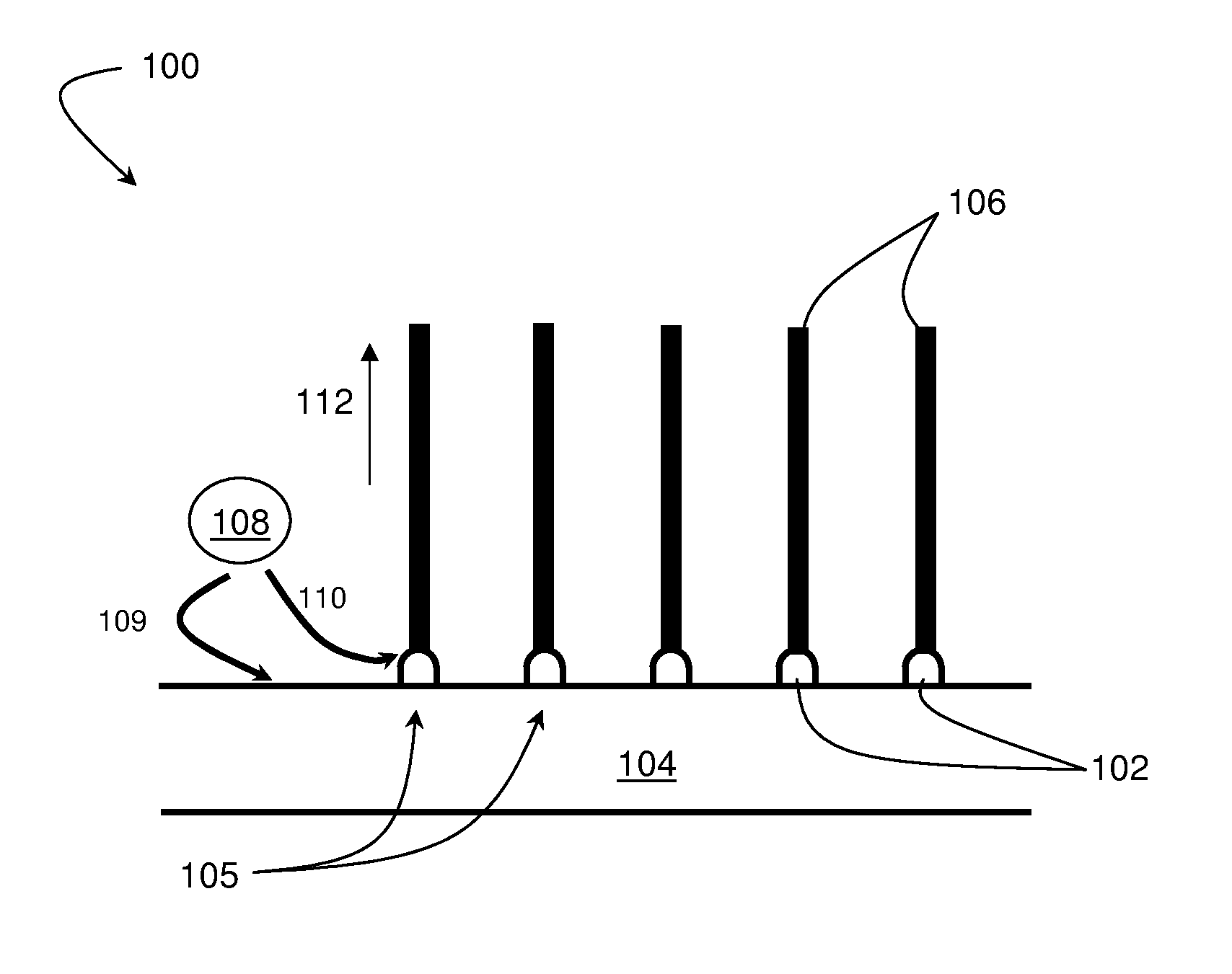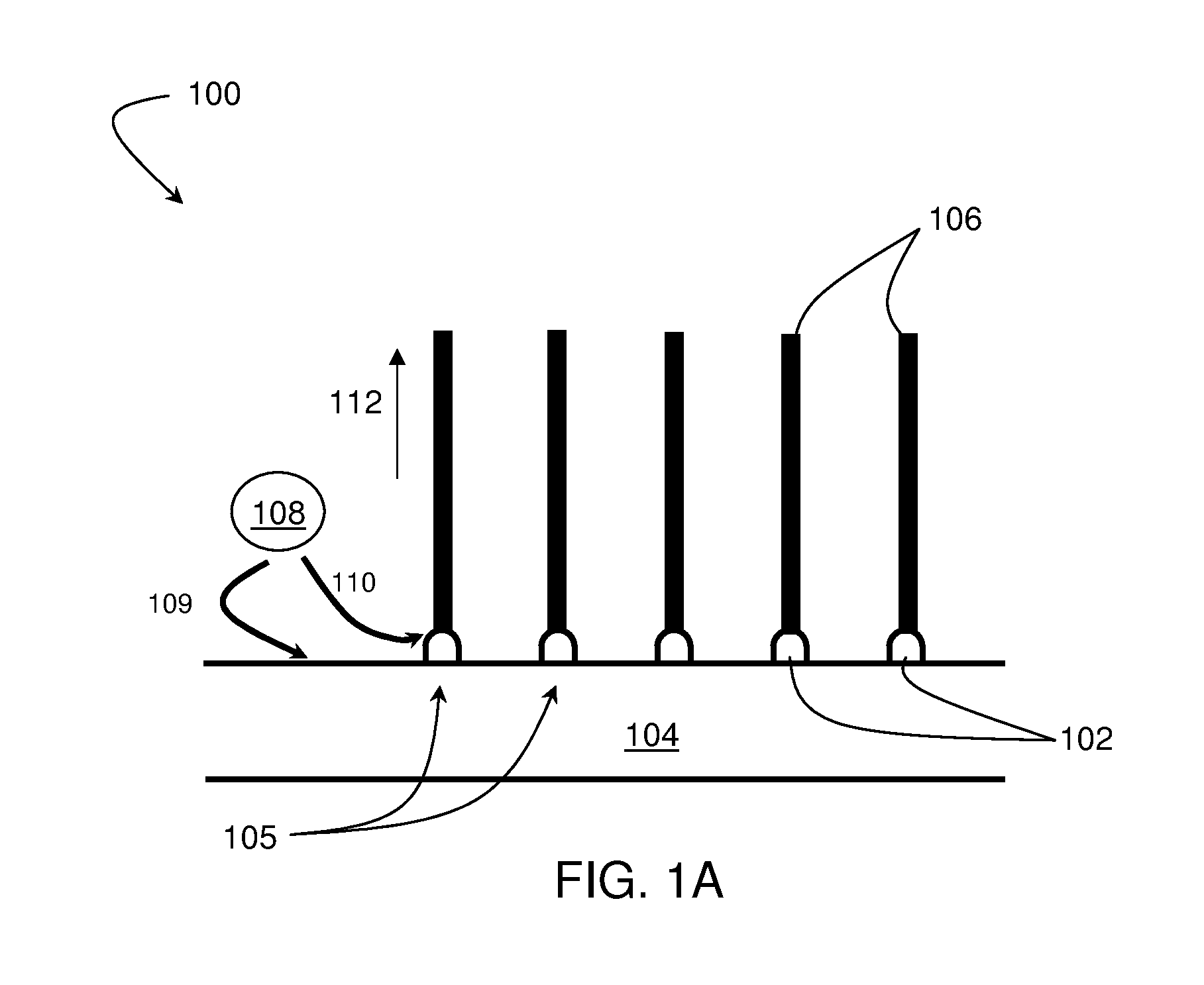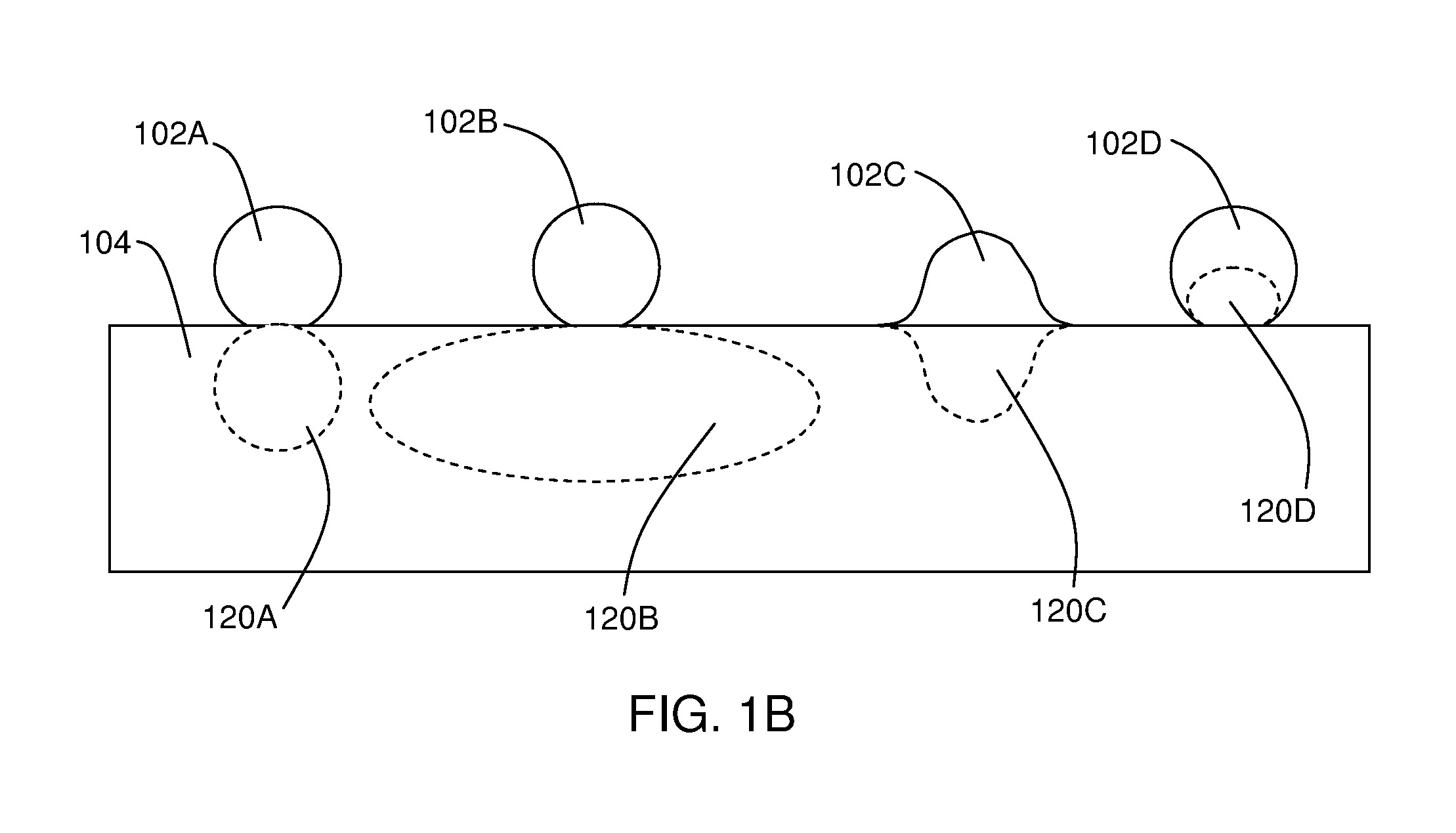Systems and methods related to the formation of carbon-based nanostructures
a carbon-based nanostructure and carbon nanotechnology, applied in the field of systems and methods related to the formation of carbon-based nanostructures, can solve the problem of limiting the applications in which they may be used
- Summary
- Abstract
- Description
- Claims
- Application Information
AI Technical Summary
Benefits of technology
Problems solved by technology
Method used
Image
Examples
example 1
[0086]In this example, nanoparticulate zirconia (ZrO2) was used as a nanopositor to produce multi-walled nanotube (MWNT) and single-walled nanotube (SWNT) growth by thermal chemical vapor deposition (CVD). In addition, nanoparticulate zirconia (ZrO2) was used as a nanopositor in the transformation of solid amorphous carbon into graphitic nanoshells. Si substrates were coated with films of ZrO2 deposited from liquid solutions and found that processing of theses substrates by CVD resulted in substantial carbon nanotube (CNT) growth. In situ X-ray photoelectron spectroscopy (XPS) analysis during CVD growth of CNTs from several substrates with zirconia was used to show that the CNT growth occurred on an oxide, and the oxide remained in an oxidized state during growth. Depending on temperature and gas flow conditions used during CVD, these substrates demonstrated the ability to grow either SWNTs or MWNTs, including local vertically aligned “forest” morphologies which are indicative of hi...
example 2
[0119]This example describes the production of prefabricated monodisperse high-purity zirconia nanoparticle nanopositors and the growth of carbon nanotubes (CNTs) from the zirconia nanoparticle nanopositors.
[0120]Nanoparticle Synthesis
[0121]Monodisperse zirconia nanoparticles were prepared according to the method of Joo et al., described elsewhere (see Journal of the American Chemical Society, 2003, 125, 6553-6557). Briefly, zirconium isopropoxide propanol complex and zirconium tetrachloride were added to redistilled, degassed trioctylphosphine oxide (TOPO) at 60° C. The reaction mixture was slowly raised to 340° C. and held at this temperature for 2 hours with vigorous stirring. The reaction mixture was then cooled to 60° C., at which dried, degassed acetone was added to precipitate the resulting zirconia nanoparticles. HRTEM characterization of nanoparticles prepared through this technique and used for CNT growth revealed a highly uniform particle size distribution with an average...
PUM
 Login to View More
Login to View More Abstract
Description
Claims
Application Information
 Login to View More
Login to View More - R&D
- Intellectual Property
- Life Sciences
- Materials
- Tech Scout
- Unparalleled Data Quality
- Higher Quality Content
- 60% Fewer Hallucinations
Browse by: Latest US Patents, China's latest patents, Technical Efficacy Thesaurus, Application Domain, Technology Topic, Popular Technical Reports.
© 2025 PatSnap. All rights reserved.Legal|Privacy policy|Modern Slavery Act Transparency Statement|Sitemap|About US| Contact US: help@patsnap.com



